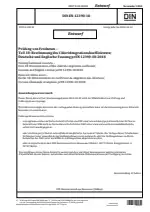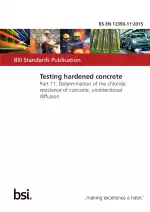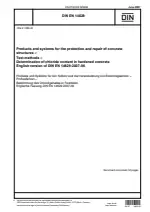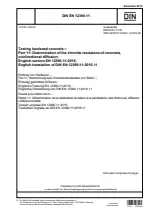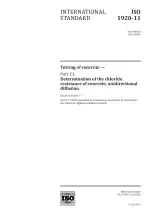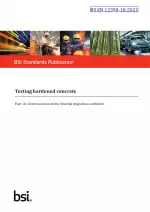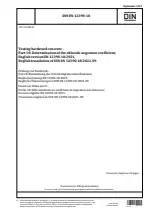Testing Hardened Concrete - Part 18: Determination of the Chloride Migration Coefficient
Also Known As:
The standard DIN EN 12390-18 titled "Testing Hardened Concrete - Part 18: Determination of the Chloride Migration Coefficient" outlines the process for determining the non-steady-state chloride migration coefficient of hardened concrete specimens at a specific age. This coefficient is crucial in evaluating the resistance of concrete to chloride penetration, thereby indicating its durability.
The test method described in the standard involves subjecting the concrete specimens to a saline solution and analyzing the migration of chloride ions through the material. The procedure focuses on the non-steady-state condition and does not consider any potential long-term interaction between the concrete and the saline solution. Consequently, the results obtained serve as an indicator of the concrete's ability to resist chloride penetration.
It's important to note that the standard specifies that the test procedure is not applicable to concrete specimens that have been treated with surface coatings or treatments like silanes. This exclusion aims to ensure accurate and reliable results by focusing solely on the nature of the concrete itself, rather than the influence of external factors.
| Descriptors | Chlorides, Coefficients, Concrete structures, Concretes, Consistency (mechanical property), Construction, Construction materials, Definitions, Determination, Durability, Evaluations, Migration, Properties, Resistance, Solid concrete, Specification (approval), Test specimens, Testing, Permanency |
| ICS Codes | 91.100.30 - Concrete and concrete products |
| Language(s) | English + German |
| File Size | 8.6 MB |

